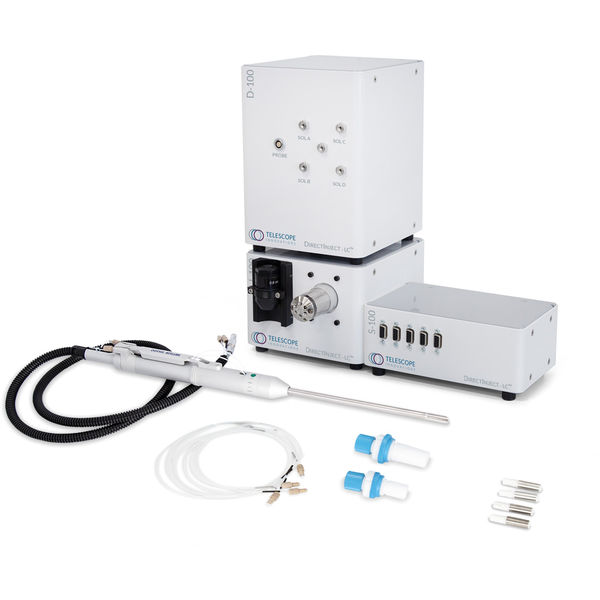

System DirectInject-LC ES Probe210
Enhance Process Understanding.System DirectInject-LC with EasySampler Probe 210 Set
HPLC for Reaction Analysis
DirectInject-LC™ enables HPLC to be used for near real-time reaction and crystallization understanding, with fully automated sampling and injection.
Effortless In-Situ Reaction Sampling
Hands-free and reproducible reaction sampling, preparation, and injection. Continuously collect representative samples, with EasySampler™ technology.
Fewer Trials, More Discoveries
Analysis of the data with world-leading iC Software, specifically designed for reaction analysis and modeling, enables deeper reaction insight.
رقم المادة: 14007010
سمات

PAT is Our DNA
Thousands of PAT installations around the world and four decades of experience are built into DirectInject-LC with iC LC™. iC Software seamlessly incorporates multiple orthogonal data streams that drive comprehensive reaction understanding.

Information-Rich Experimentation
Data acquisition and analysis is quick and easy with the industry standard iC Software for reaction analysis. Combine HPLC with orthogonal data to develop the most robust and accurate kinetic models.

iC LC™
Developed from the industry-leading reaction analysis iC Software, iC LC enables PAT scientists to instantly visualize and profile reaction components in near real-time.
المواصفات - System DirectInject-LC ES Probe210
| Weight | 7.8 kg |
Datasheets
DI-LC transforms conventional offline HPLC analysis into a powerful new online tool, providing process chemists an unparalleled view into near real-ti...
برمجيات
iC Data Center is a powerful tool that improves productivity for the researcher while facilitating knowledge management for the organization.